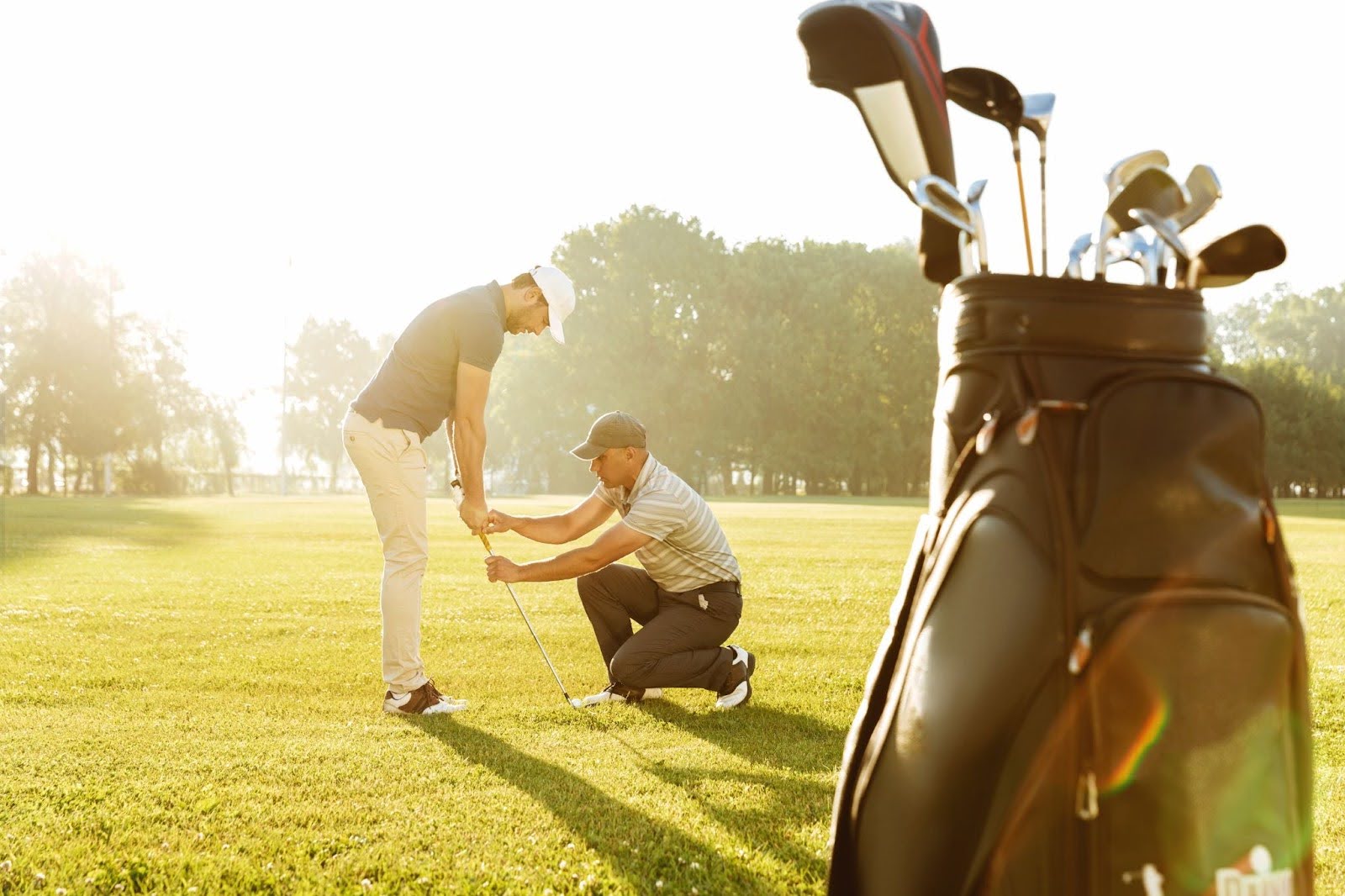Cleaning Your Golf Clubs: Tips and Techniques
No one wants clean golf clubs. Well, that’s not true. Let’s rephrase that to “no one wants golf clubs that are absolutely clean and have never been used.” Because the whole point of golf is to go out and use your set of clubs, maybe even get them messy, provided you end your round by properly cleaning golf clubs. Besides the visuals of nicely cleaned clubs, good golf club maintenance also prevents damage. Clubs covered in dirt, grit, grass or other debris can lead to moisture damage, rust, and other problems that can look bad and even impact your game.
Putting in the effort to maintain golf clubs on a regular basis also means being attentive to the proper ways to clean golf irons and clean golf woods. For instance, smart club cleaning tips suggest using a soft towel and dishwasher soap to wipe down your irons but avoid soaking them in water. Likewise, a hard wire brush can cause permanent scratches and maybe even damage some of the bindings from the shaft to the head. A soft brush is advised to lightly scrub down your club.
If done regularly with the right tools, it shouldn’t take you more than 15-20 minutes after each round. Then you won’t have the unhappy surprise of opening your bag and finding that your clubs were put back in bad shape and don’t look as good or work as well as they used to.
Proper Storage: How to Store Your Golf Equipment
Unless you live somewhere where you can golf all year long, you’re likely to pause for a while, which means you need to figure out a smart way for storing golf equipment.
Like avoiding regularly cleaning them, improper golf club storage has the potential to damage your clubs and impact your game. So even if you throw your whole bag in the shed at the end of the season, there’s the possibility of dirt and moisture creeping in.
After all your golf clubs are cleaned, consider covers for the heads of each of them, especially the woods, as well as a rain-proof bag where you store golf bag. It’s also key to make sure your clubs are fully dry after they’re cleaned and put away, otherwise you’ll have to worry about internal as well as external moisture sources when creating your golf equipment care plan.
Metal lockers with a lock are an excellent solution for proper golf storage. This can reduce the risk of bugs or moisture coming in to something wood. Proper golf storage also means being aware of other elements, such as direct sunlight that could damage grips or bindings. Planning ways to protect golf equipment also means reducing the risk of theft – you may have invested a lot into your set.
Checking for Damage: Regular Inspections and Repairs
The end of the season shouldn’t be the only time you focus on inspecting golf equipment. You should consider taking a look at them every time you go out and play. Wear and tear might take its toll over time, so it’s important to check for damage and even take steps to examine everything before more expensive golf club repairs or replacements are required.
It’s possible that your clubs could get dings, dents, chips, or other trauma. Woods may begin to split if they’ve been around for awhile. Your steel drivers may start to rust if they’ve been exposed to moisture over time. Grips are also prone to damage from sweat and sunscreen.
A basic golf club inspection at the start of the round is a good routine.
Experts say well-maintained clubs that are actively used can last up to 10 years. But routine wear and tear or damage could shorten this and require a need to consider more golf equipment maintenance. For instance, if the head begins to wobble or feels too loose.
A big indicator that it’s time to repair golf clubs or replace is if you notice that a club that’s usually consistent isn’t working as well as it used to, such as an iron that isn’t giving you your usual distance. Getting new clubs to replace your set that’s falling apart isn’t too terrible, especially if there’s always new advances in club technology.
Regripping Your Golf Clubs: When and How to Do It
Golf club grips play an important part in your swing and control. So a grip that is no longer comfortable, starts sliding, or is broken, may cause you to slice or your drive not go the direction or have the power or control you want. A damaged grip can increase your score and also affect your play, especially since it’s easy to want to hold harder if you’re worried about the grip slipping. Too much of this can hurt your wrist and elbow.
Unlike clubs, which should be replaced every few years, experts recommend regripping golf clubs about once a year if you’re an infrequent player, or every 40 rounds or so if you play more often.
Working with a pro with knowledge of how to replace golf grips is a smart way to go about this, since he or she can help evaluate your posture and how you hold your club.
Good golf grip maintenance can start with looking and feeling it every time you play. If there’s not big damage, it doesn’t hurt to wipe any grit or dirt without making an appointment to regrip clubs. But if pieces are falling off or your score is affected, consider a golf club regrip.
Maintaining Your Golf Bag: Keeping It Clean and Organized
Keeping an eye on the condition of your clubs and balls are both key to making sure your equipment is in good shape and your performance on the course goes well. But some golfers neglect another key part of your golf equipment: maintaining golf bag.
A clean golf bag can do wonders for you – it not only looks good but provides easy access to the things you need, everything from your clubs and balls to your tees and pencils, plus extras like sunscreen, snacks, or your water bottle.
Regular players know it’s easy to let the bag get out of control. This can slow you down if you need something and can’t find it. Not taking the effort to organize golf bag can potentially lead to other problems, like getting grass inside or other moisture and mildew. Sunlight can also crack a leather bag over time.
When planning your golf bag care, start by emptying everything out. This can help you re-sort or even throw out unwanted junk like broken tees. Then scrub the inside and outside with warm water and mild soap. Leave it to dry before repacking your clean golf gear which avoids the growth of moisture.
Golf bag maintenance and deep cleaning doesn’t have to be done after each round but at least a few times a season or if you detect the signs of moisture or mildew.
Regularly Updating Your Golf Equipment: When to Upgrade
Golfers can be interesting people. We may get sentimental about clubs we’ve had for years, even if they’ve been around. They fit us well, like a pair of comfy shoes. But at the same time, there’s always interest in when to upgrade golf clubs and upgrade golf equipment, especially when you hear about or see some new clubs in action. Nothing as humbling as seeing someone blast a shot with a fancy new driver when your classic club goes half the distance.
When is the right time to upgrade golf equipment? There isn’t a firm answer. Some manufacturers may recommend a golf club upgrade when a club finally gives out. But others say to consider investing in new golf equipment every few years to take advantage of modern golf technology.
Certainly “an investment” is a key word: doing a full replacement regularly might strain your budget, especially since many new clubs are up there in price. Or, instead of shelling out the funds for a complete golf club upgrade, consider replacing golf gear one at a time, maybe switching out one new club every six months. This could be a fun way to grow your club collection, learn to love each club, and take advantage of new technology but not having to completely upgrade golf clubs.
Your local pro likely will have some advice on when to replace golf gear. Generally, if it’s working fine, maintained well, nothing is broken, and your scores are fine, it probably doesn’t hurt to hang onto your set for little longer. Then again, he or she might even let you demo some newer clubs so you can feel the difference.








Add comment
You must be logged in to post a comment.